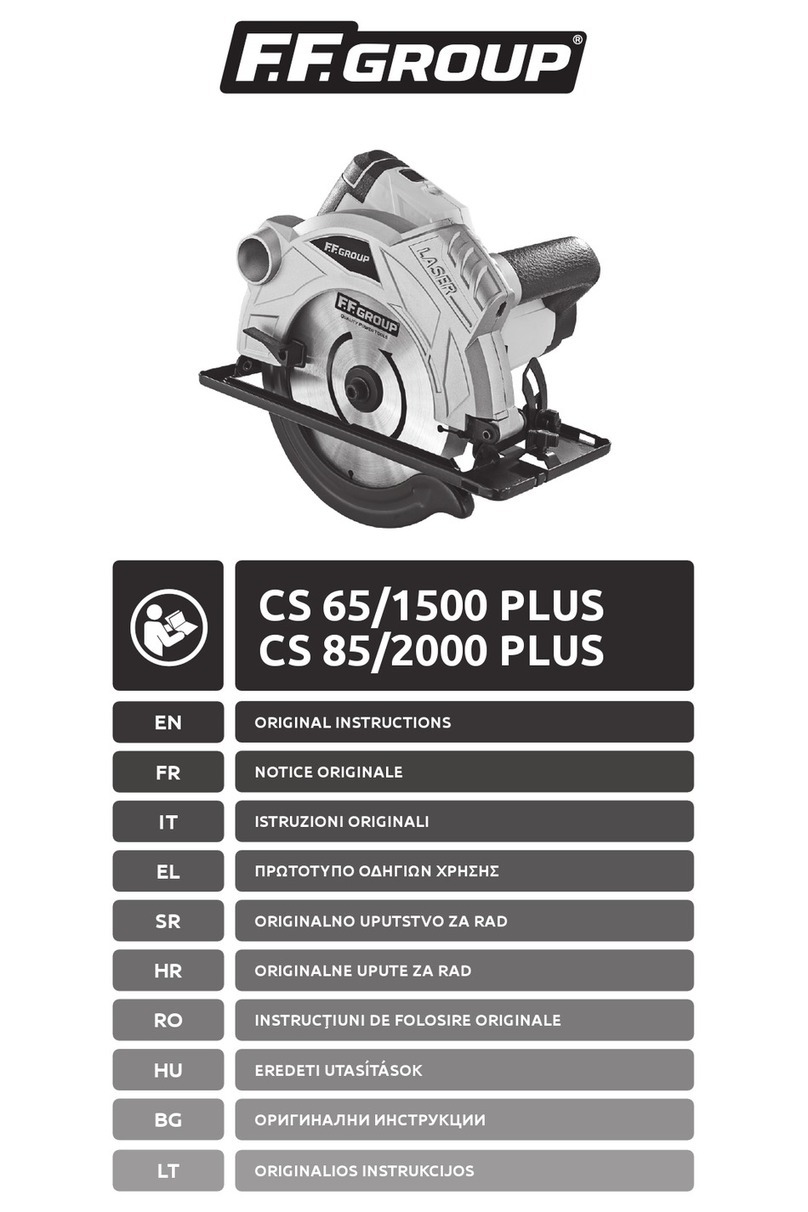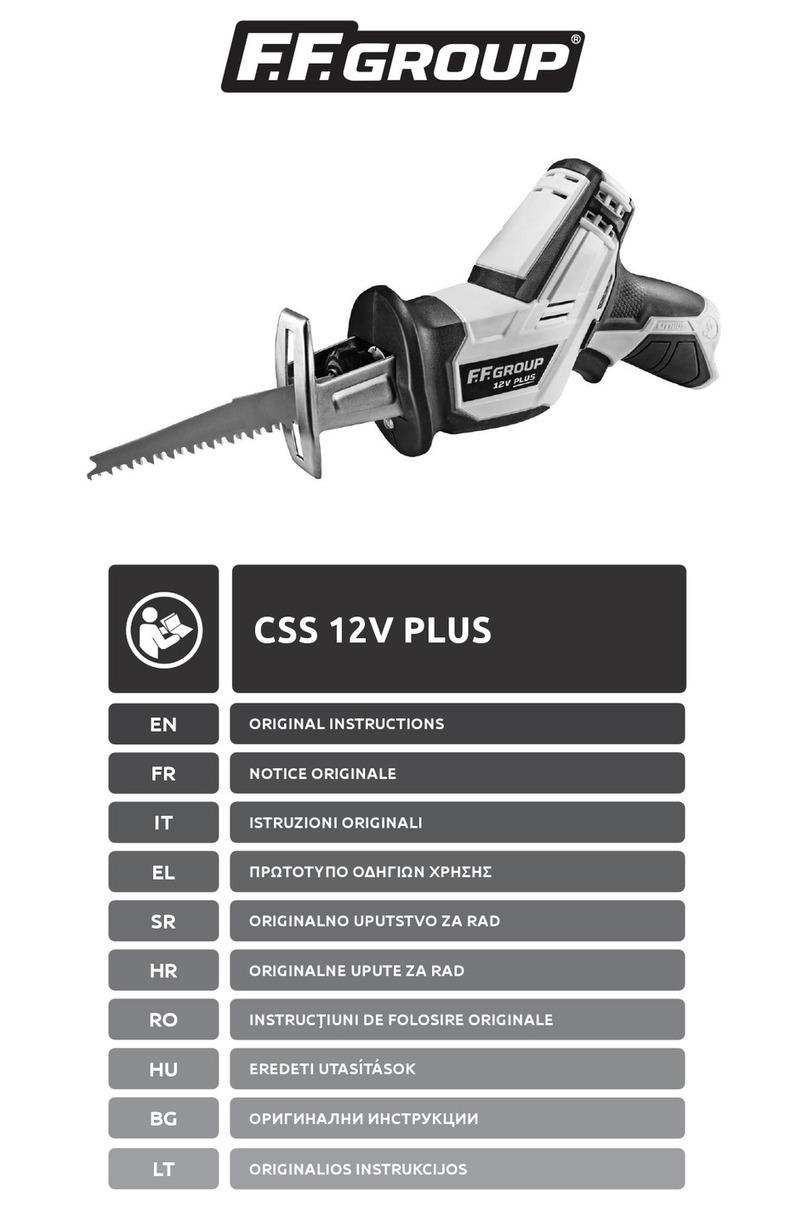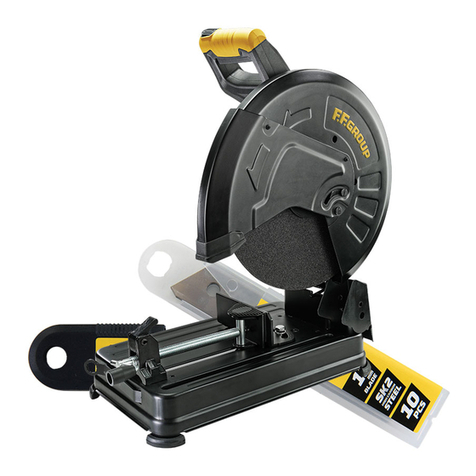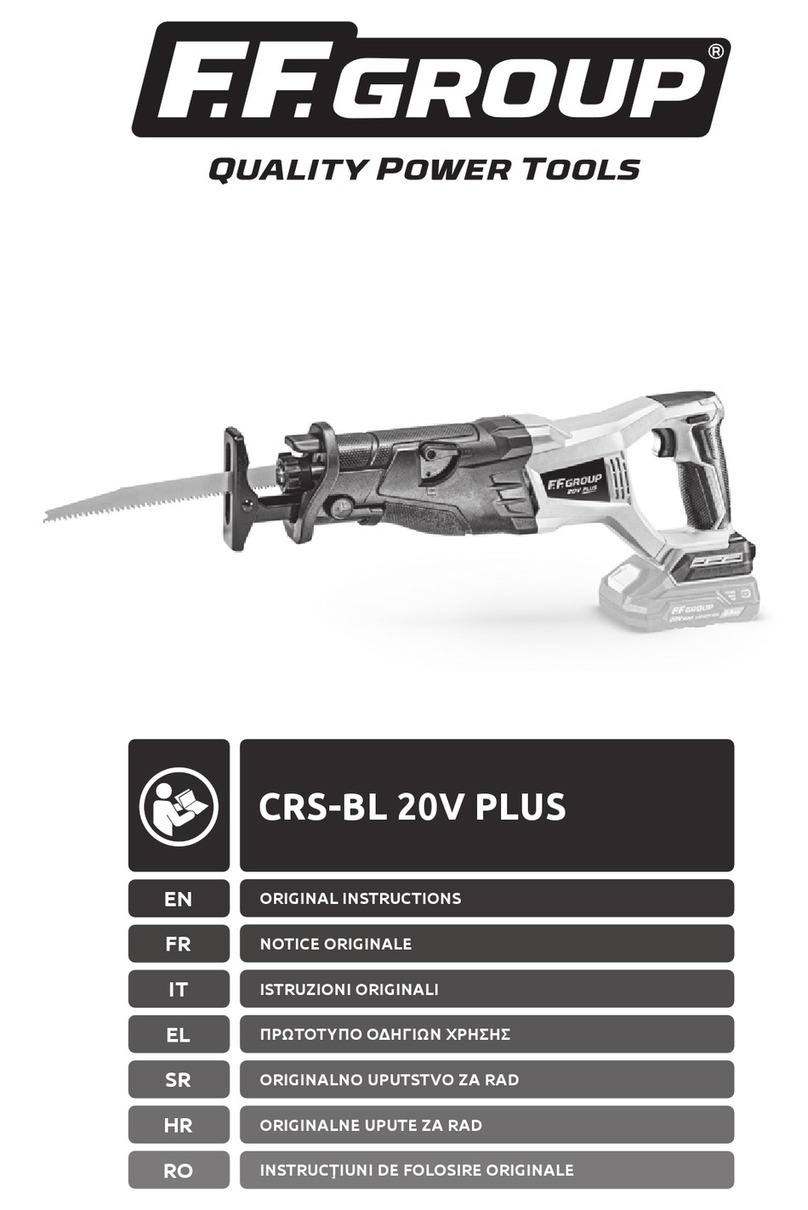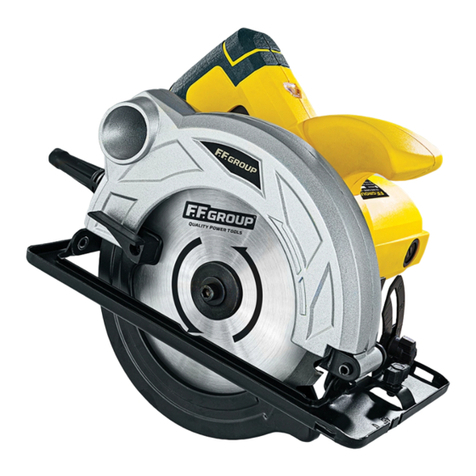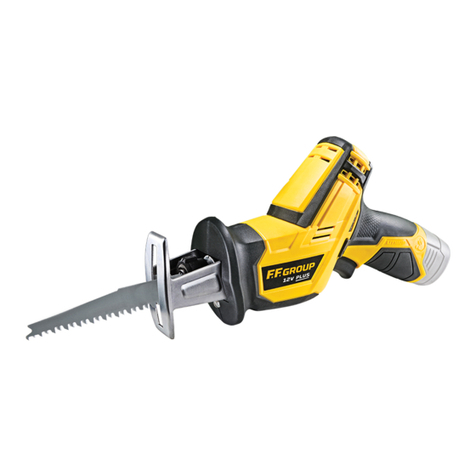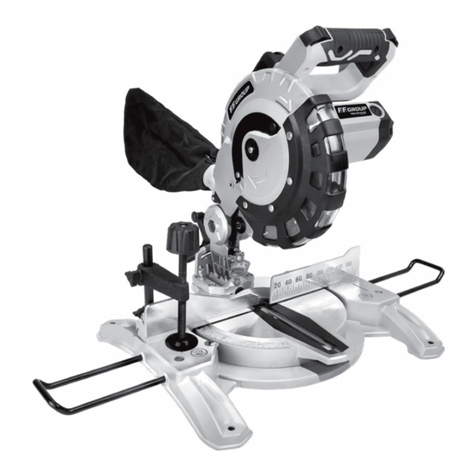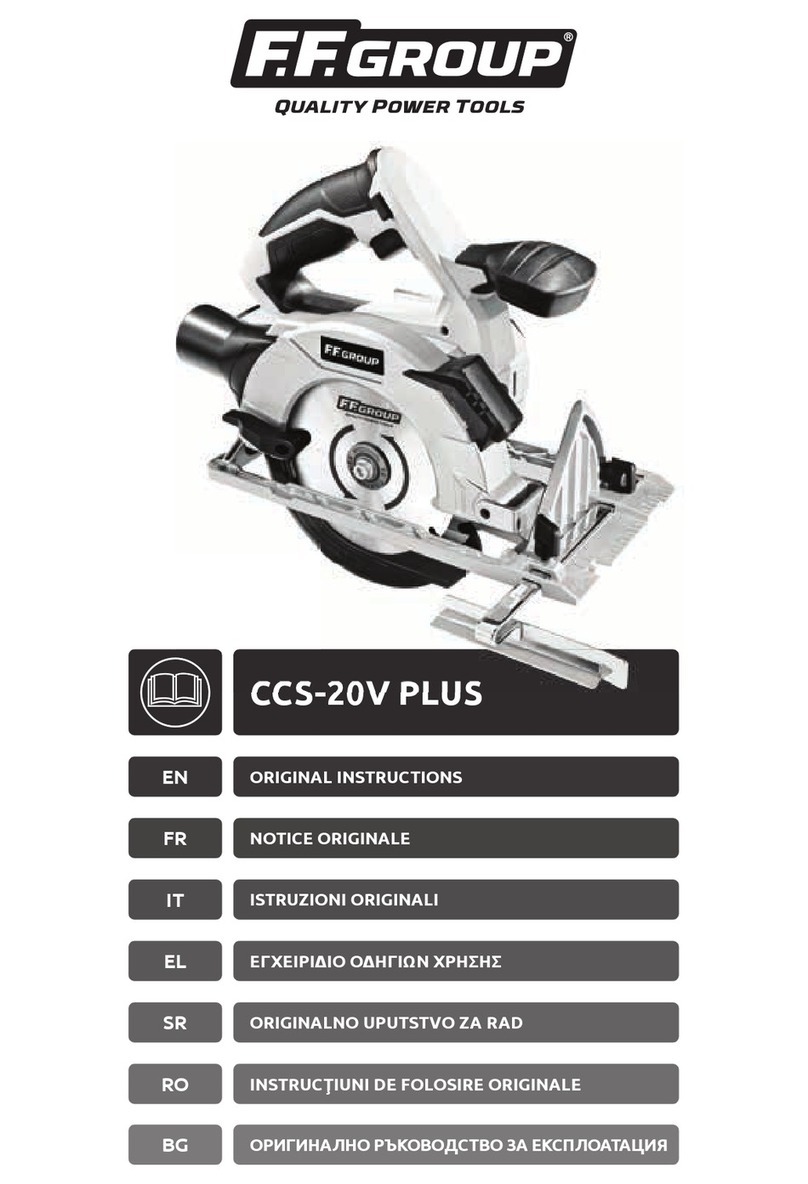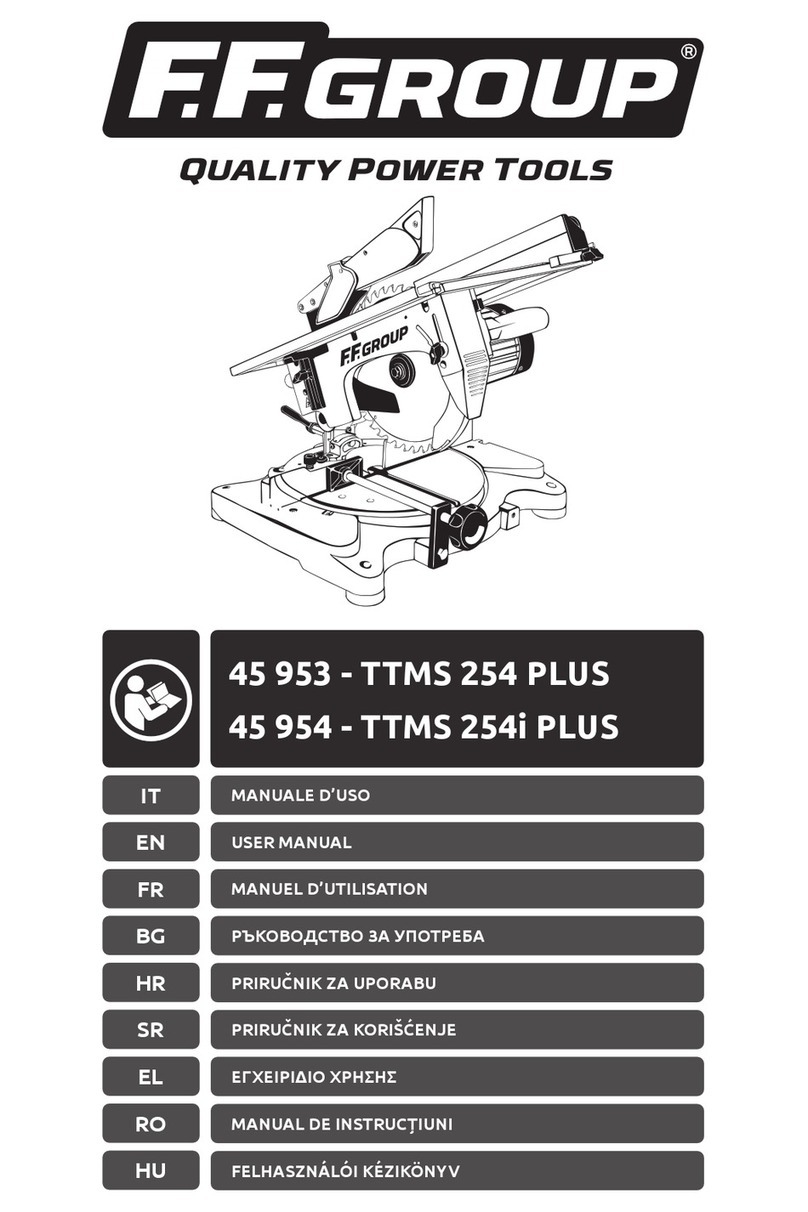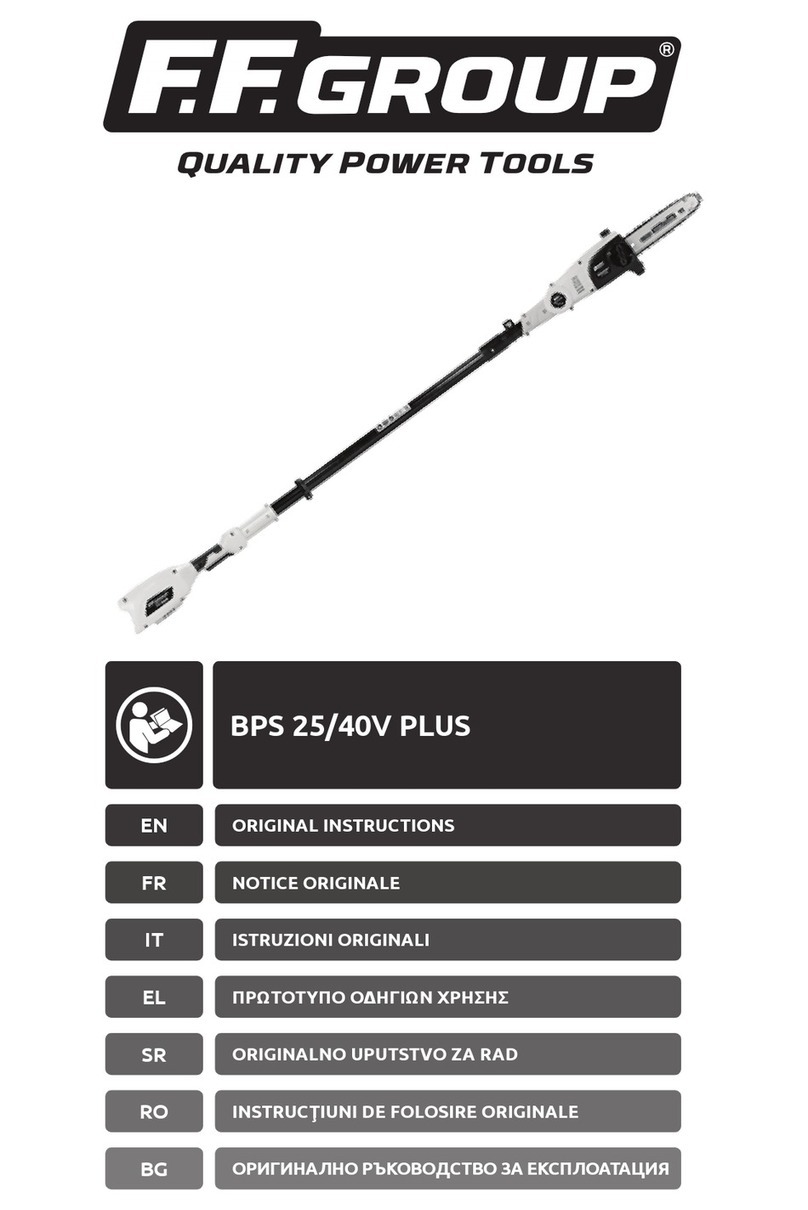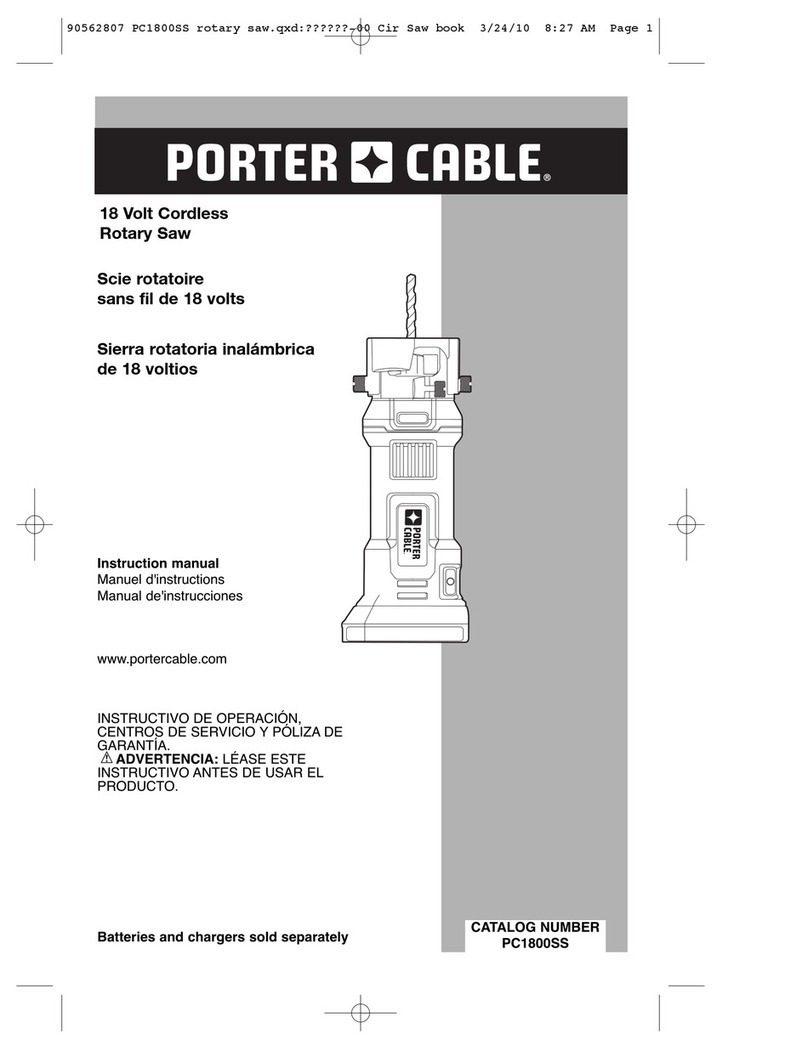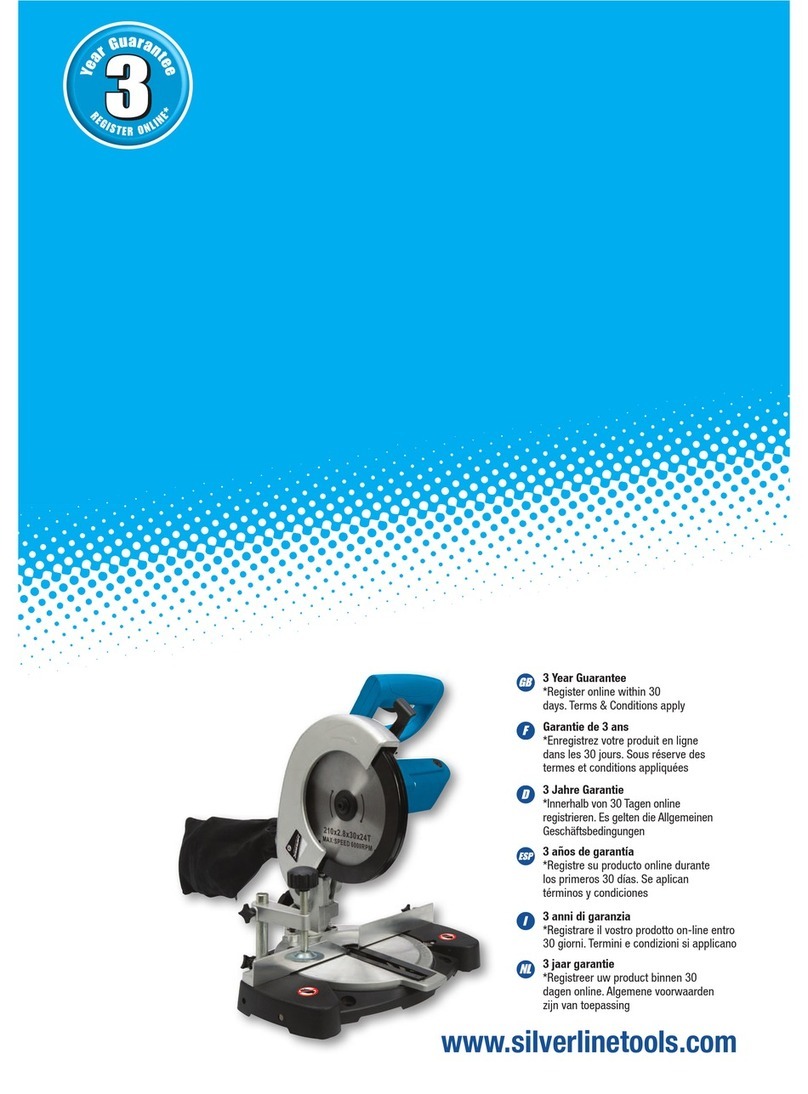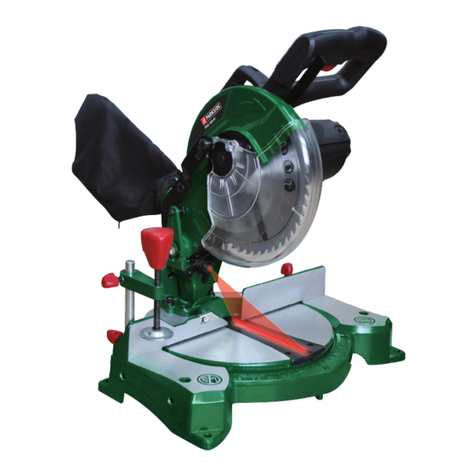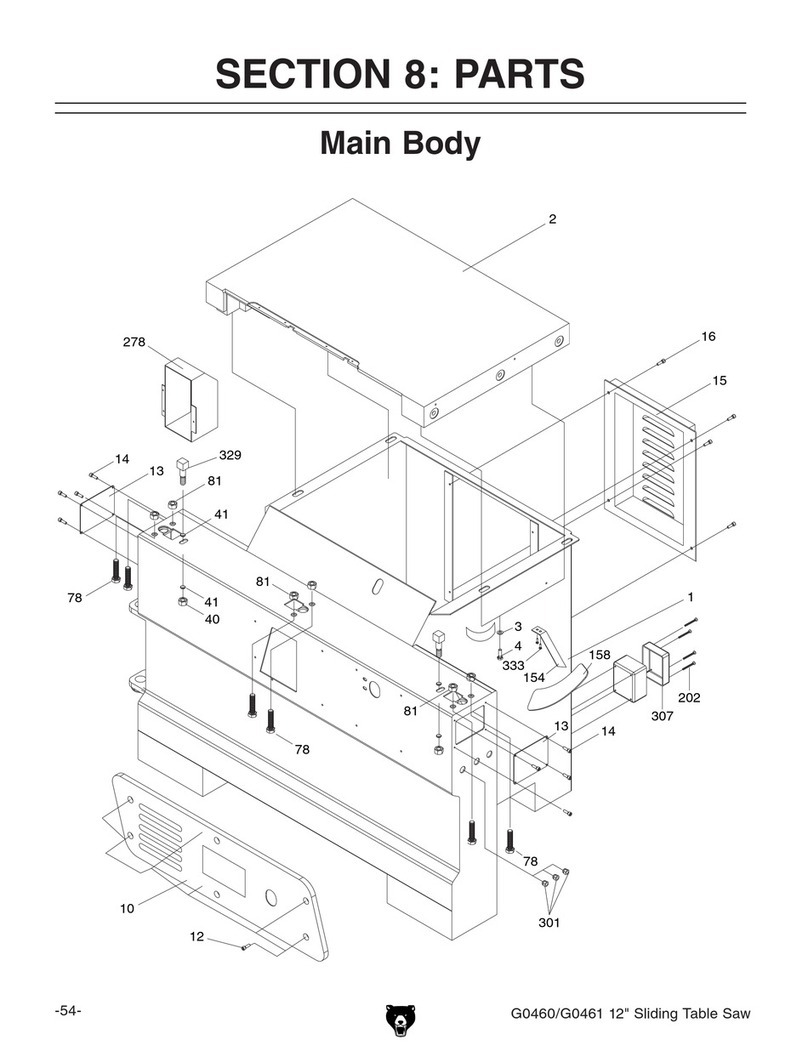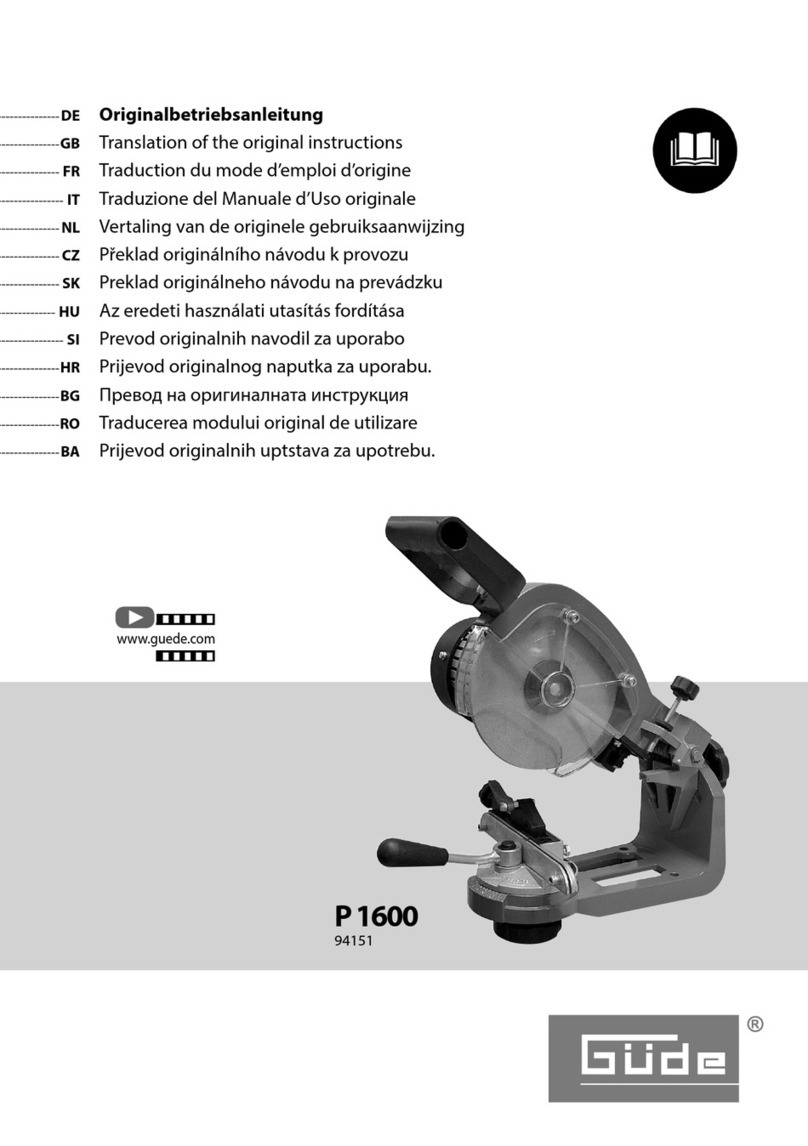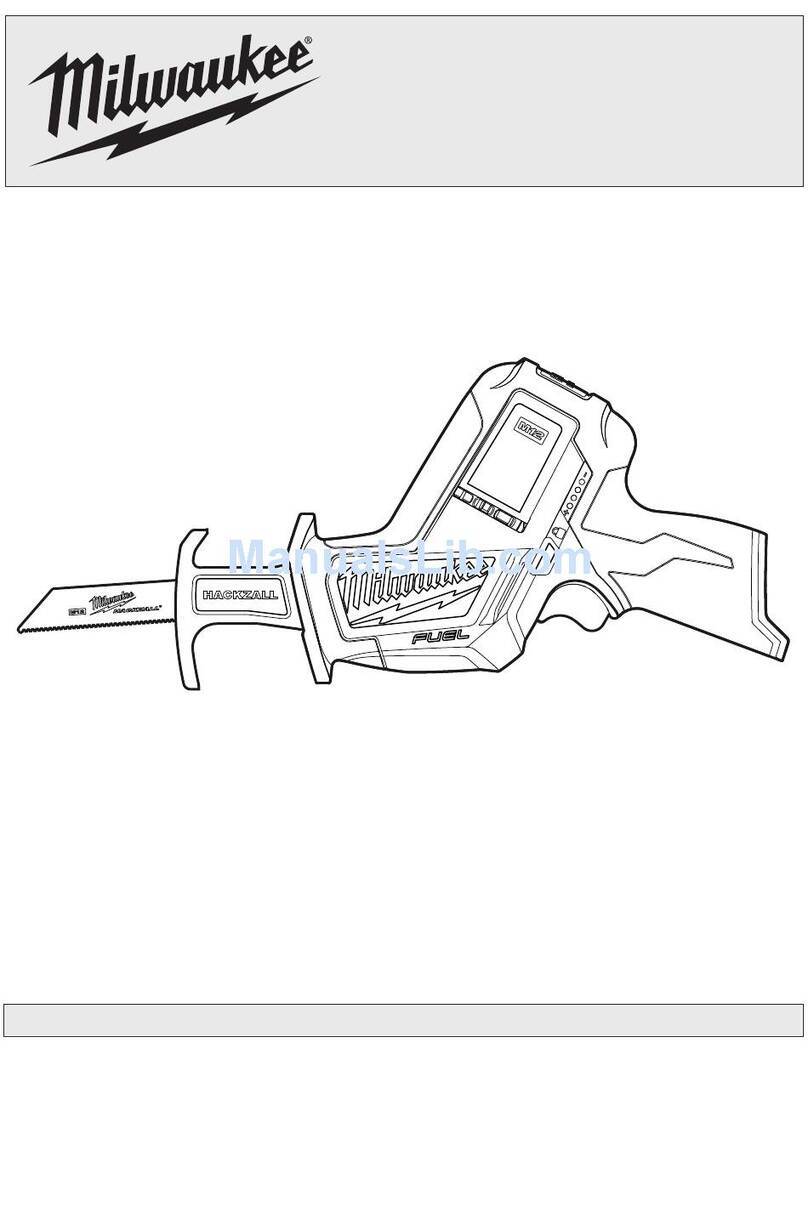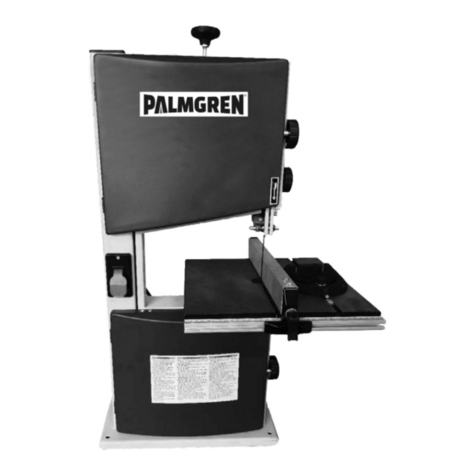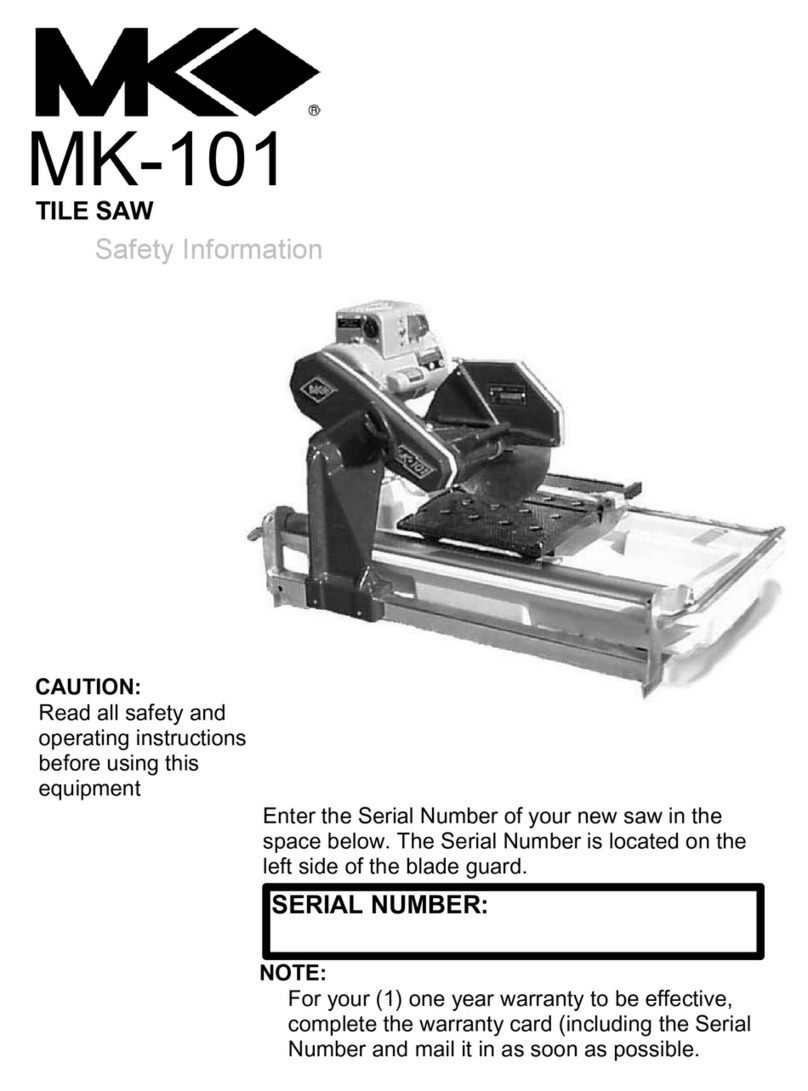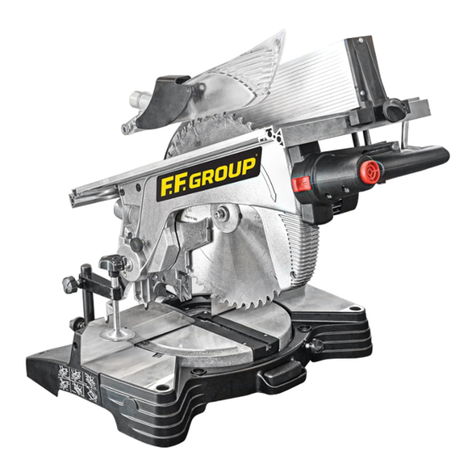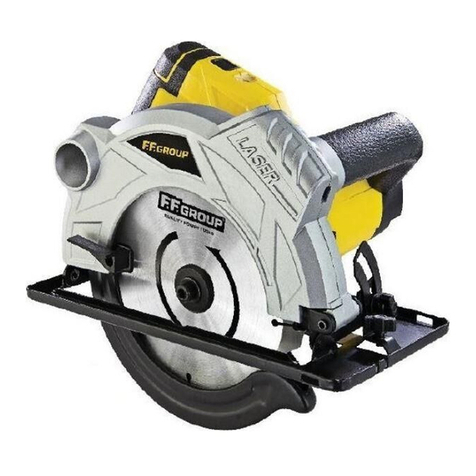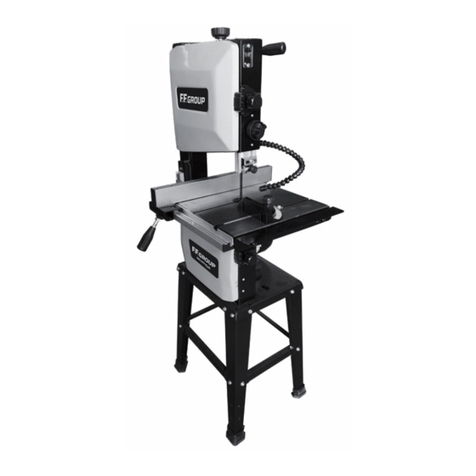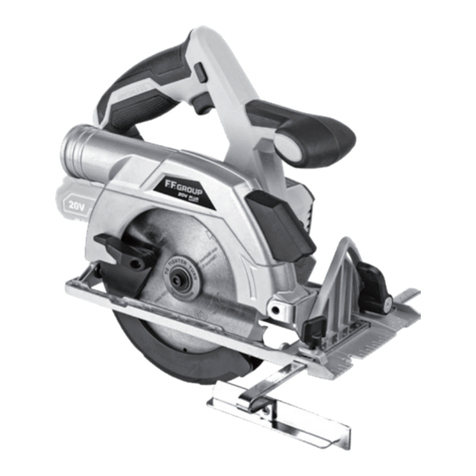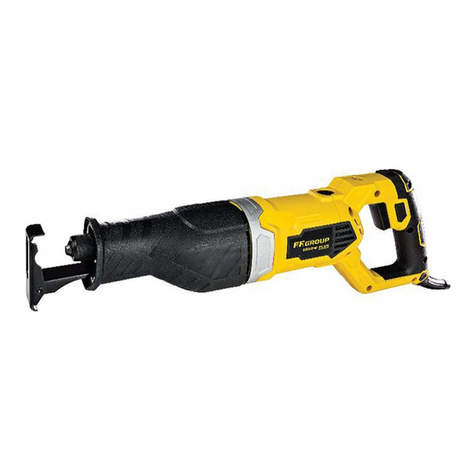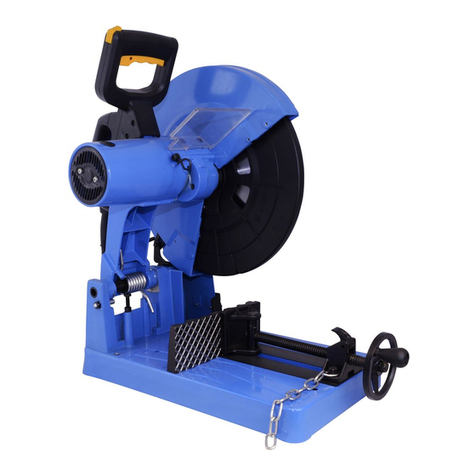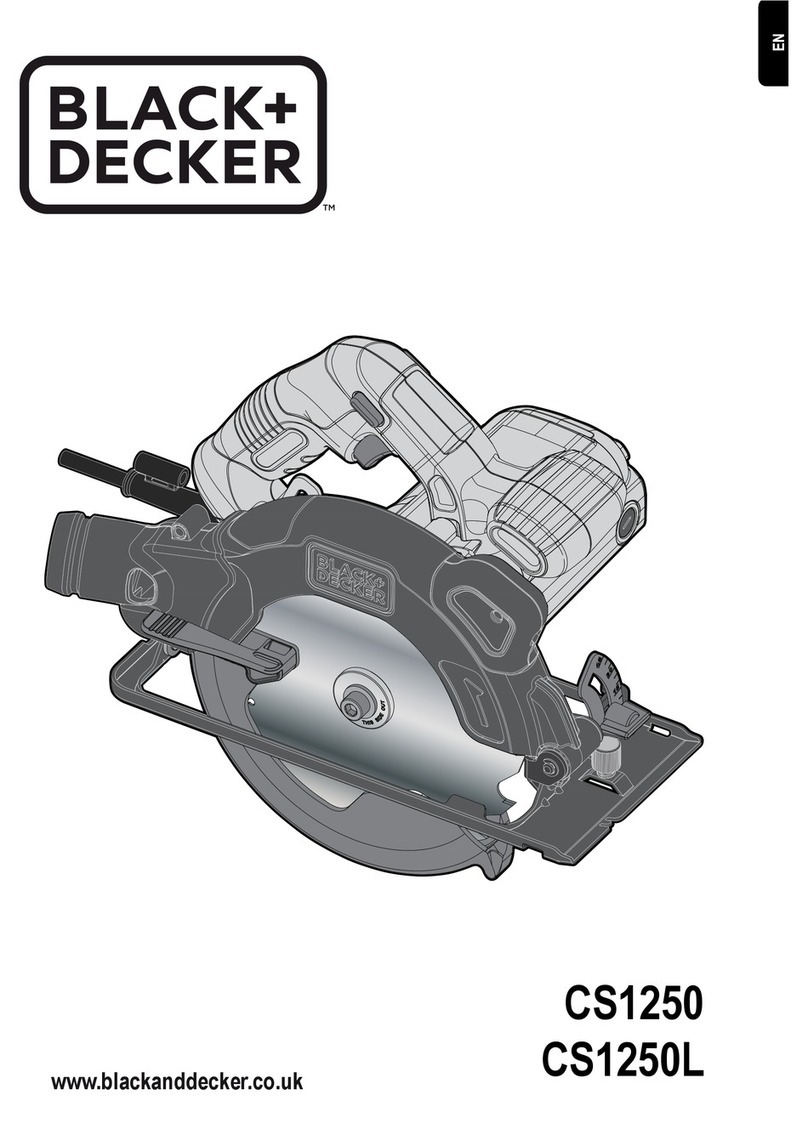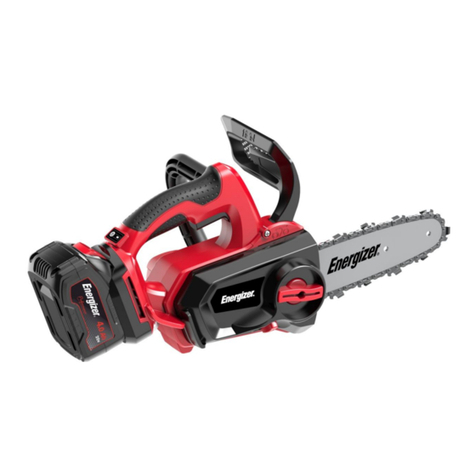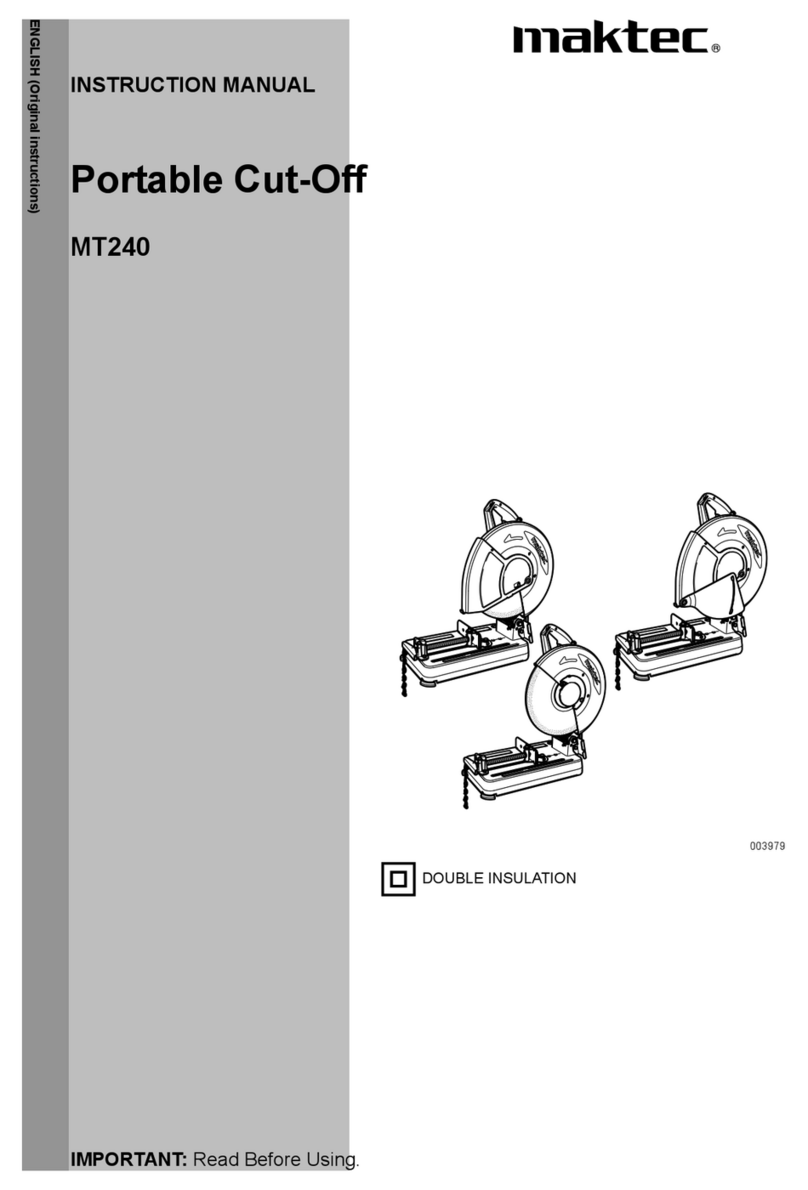
Français | 19
www.ffgroup-tools.com
SCMS 210 PLUS
dans le sens des aiguilles d'une montre.
AVERTISSEMENT! Pour éviter des blessures graves,
blessures graves.
5. Desserrez le levier de verrouillage du biseau
et déplacez la tête de scie vers la gauche
6. Les angles de biseau peuvent être réglés de 0°
7. Alignez le point indicateur avec l'angle sou-
haité.
-
gle souhaité, serrez fermement le levier de
verrouillage du biseau.
onglets avec un bord fermement contre le
guide. Si la planche est déformée, placez le
côté convexe contre la clôture. Si le bord con-
cave de la planche est placé contre le guide,
10. Lors de la coupe de longs morceaux de bois
ou de moulures, soutenez la ou les extrémités
en surplomb du stock avec les supports de
matériau.
-
ler avec le bord de la lame de scie.
12. Saisissez fermement le support d'une main et
-
AVERTISSEMENT! Pour éviter des blessures graves,
gardez vos mains en dehors de la zone sans mains;
sec de l'opération de coupe juste pour vous
lors de la coupe.
14. Saisissez fermement la poignée de la scie, puis
appuyez sur la gâchette. Attendez quelques
secondes pour que la lame atteigne sa vitesse
maximale.
laser pour allumer le laser.
16. Déverrouillez le bouton de sécurité de la pro-
tection inférieure verrouillable, puis abaissez
travailler.
s'arrêter de tourner avant de soulever la lame
Une coupe d'onglet composée est une coupe
réalisée en utilisant un angle d'onglet et un an-
gle de biseau en même temps. Ce type de coupe
est utilisé pour réaliser des cadres, découper des
pour certaines coupes de charpente de toiture.
Des précautions doivent toujours être prises lors
-
sont interdépendants les uns avec les autres. Ch-
d'onglet. Plusieurs réglages peuvent être néces-
saires pour obtenir la coupe souhaitée. Le premier
Une fois que les deux réglages corrects pour une
-
jours une coupe d'essai dans du bois de rebut avant
2. Desserrez le bouton de verrouillage de la table
le pointeur s'aligne avec l'angle souhaité sur
l'échelle d'onglet.
onglets.
5. Desserrez le levier de verrouillage du biseau et
l'angle de biseau souhaité.
6. Les angles de biseau peuvent être réglés de 0 °
7. Alignez le point indicateur avec l'angle s o u -
haité.
souhaité, serrez fermement le levier de ver-
rouillage du biseau.
guide. Si la planche est déformée, placez le
côté convexe contre le guide, si le bord con-
cave de la planche est placé contre le guide, la
de la coupe, bloquant la lame.
10. Lors de la coupe de longs morceaux de bois ou
de moulures, soutenez l'extrémité opposée du
stock avec les supports de matériau.
avec le bord de la lame de scie.
12. Saisissez fermement le support d'une main et
de l'opération de coupe juste pour vous assur-
coupe.
laser pour allumer le laser.




















